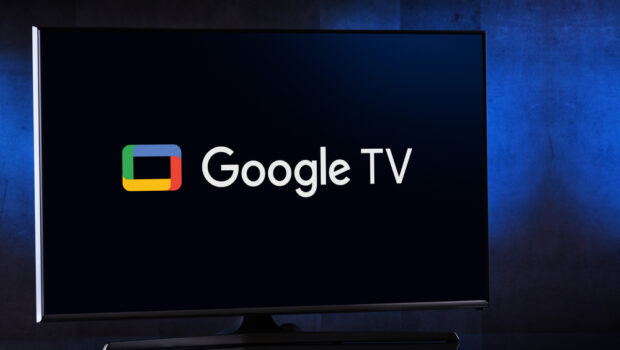Google TV vs. YouTube TV: Exploring the Differences and Similarities
With the rise of streaming services, the options for TV entertainment have expanded beyond cable and satellite providers. Two popular options are Google TV and YouTube TV, both of which offer a range of live TV channels and on-demand content. However, while both services are from Google, they have distinct differences in terms of pricing, features, and user experience. In this article, we’ll explore the similarities and differences between Google TV and YouTube TV, so you can decide which one is right for you.
Pricing
Google TV pricing
Google TV offers a range of pricing options depending on the type of content you want to access. For example, you can purchase movies or TV shows individually, or subscribe to a range of channels and streaming services. The cost of Google TV ranges from free to several hundred dollars per month, depending on the content you choose.
YouTube TV pricing
YouTube TV offers a single pricing option of $64.99 per month. This gives you access to over 85 live TV channels and on-demand content. However, this pricing does not include premium channels or add-ons, which come at an additional cost.
Free trials and promotions
Both Google TV and YouTube TV offer free trial periods for new users. Google TV typically offers a 14-day free trial, while YouTube TV offers a 7-day free trial. Both services also occasionally offer promotional pricing or discounts, particularly for new users.
Additional costs
While both Google TV and YouTube TV offer a range of channels and content, there may be additional costs associated with certain channels, add-ons, or premium content. For example, YouTube TV offers additional channels and add-ons for an additional monthly fee. Similarly, Google TV may charge a rental or purchase fee for certain movies or TV shows.
Value for money
When it comes to value for money, it ultimately depends on your preferences and viewing habits. For users who primarily watch live TV and sports, YouTube TV may offer better value due to its extensive channel lineup. However, if you prefer a more customized viewing experience with a range of content options, Google TV may be a better choice. It’s important to compare pricing and content offerings to determine which service offers the best value for you.
Content
Live TV channels
Both Google TV and YouTube TV offer a range of live TV channels. YouTube TV offers over 85 live TV channels, including major networks like ABC, CBS, NBC, and Fox, as well as popular cable channels like ESPN and CNN. Google TV, on the other hand, allows you to subscribe to specific channels and streaming services, so the number of available live TV channels varies depending on the services you choose.
On-demand content
Both Google TV and YouTube TV offer on-demand content, including TV shows, movies, and documentaries. YouTube TV has a large library of on-demand content available to subscribers, while Google TV allows you to rent or purchase movies and TV shows individually.
Premium content
YouTube TV offers premium content options like HBO Max, Showtime, and Starz for an additional monthly fee. Google TV also allows you to purchase premium content like movies and TV shows from major studios and networks.
Local channels
YouTube TV offers local channels in most markets, including ABC, CBS, NBC, and Fox affiliates. Google TV, on the other hand, does not offer local channels directly, but you can access them through third-party services like Hulu Live TV or Sling TV.
User-generated content
While YouTube TV is known for its user-generated content, Google TV doesn’t offer much in the way of user-generated content. However, Google TV does allow you to access content from YouTube, which is known for its user-generated videos and channels.
Features
User interface
Both Google TV and YouTube TV have user-friendly interfaces that are easy to navigate. Google TV’s interface is designed to help you discover new content, with personalized recommendations and easy search functionality. YouTube TV’s interface is more straightforward and intuitive, with a traditional TV guide layout.
Streaming quality
Both services offer high-quality streaming, with 1080p resolution available for most content. YouTube TV also offers some channels in 4K resolution, although this is limited to certain devices and networks.
Multiple device support
Both services offer support for multiple devices, including smartphones, tablets, smart TVs, and streaming devices like Chromecast and Roku. However, Google TV is built into certain TVs and streaming devices, which means you may not need to purchase additional hardware.
Cloud DVR
Both Google TV and YouTube TV offer cloud DVR functionality, which allows you to record live TV and store it in the cloud. YouTube TV’s cloud DVR offers unlimited storage and recordings that can be saved for up to 9 months, while Google TV’s cloud DVR offers 500 hours of storage.
Personalization options
Both services offer personalized recommendations based on your viewing habits and preferences. Google TV allows you to customize your homepage with content from different services, while YouTube TV’s recommendations are based on your viewing history and channel subscriptions. Additionally, both services offer profiles for multiple users, which allows you to keep your viewing history and recommendations separate from others in your household.
If you’re experiencing issues with your TV, having a “TV Repairman Near Me” service can be helpful to ensure uninterrupted viewing pleasure while you enjoy the personalized recommendations and other features offered by Google TV and YouTube TV.
Conclusion
Both Google TV and YouTube TV offer unique features and advantages to users. While Google TV allows users to discover new content and personalize their homepage with content from different services, YouTube TV provides a more straightforward TV guide layout and offers 4K resolution for certain channels. Both services offer cloud DVR functionality, multiple device support, and personalized recommendations based on user preferences. Ultimately, the choice between the two services will depend on individual preferences and needs. By exploring the similarities and differences between Google TV and YouTube TV, users can make an informed decision about which service best meets their needs and enhances their viewing experience.












